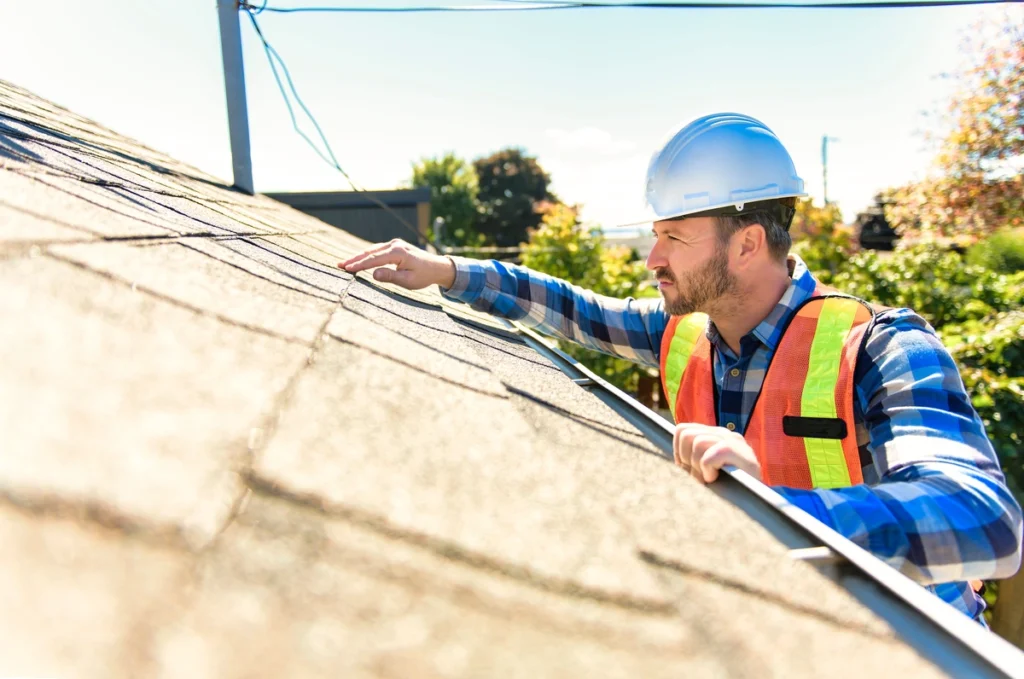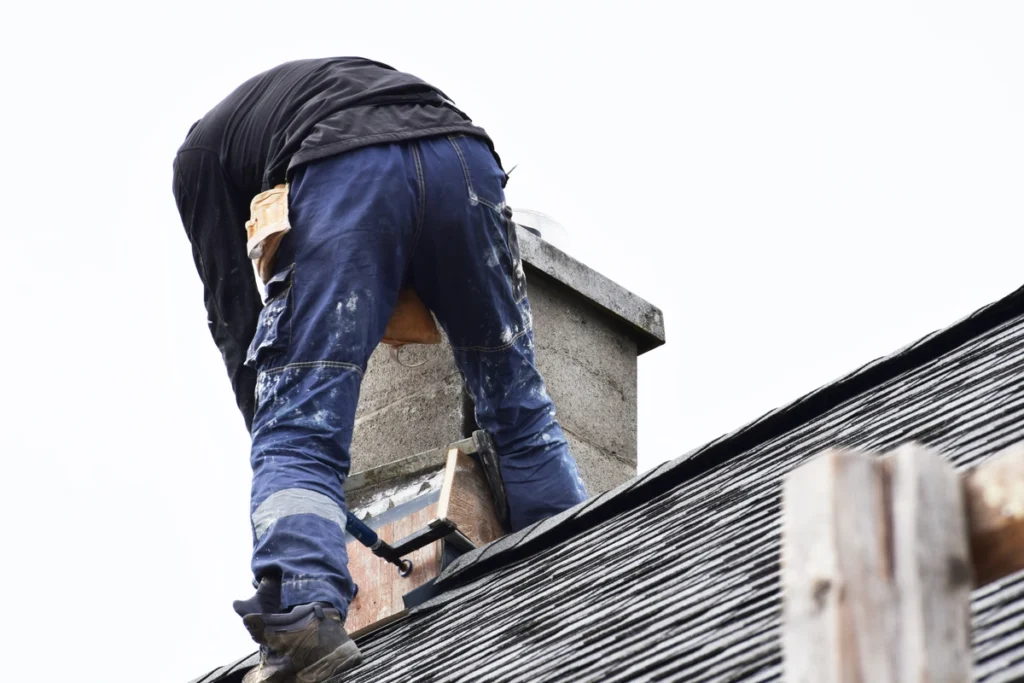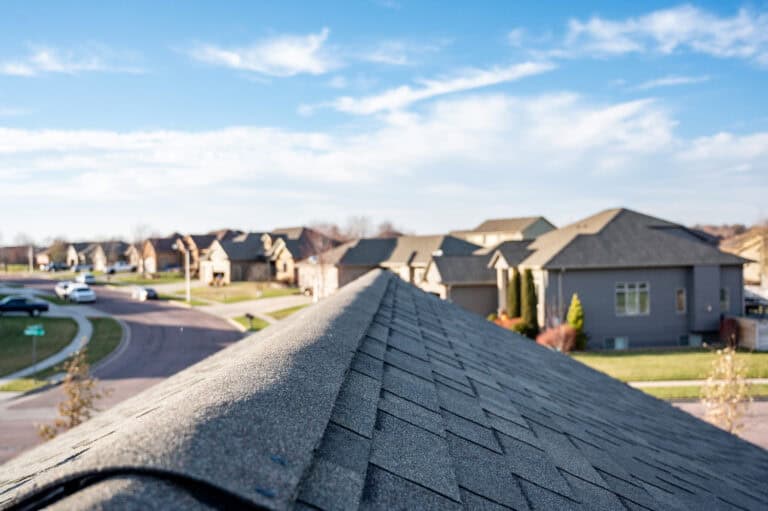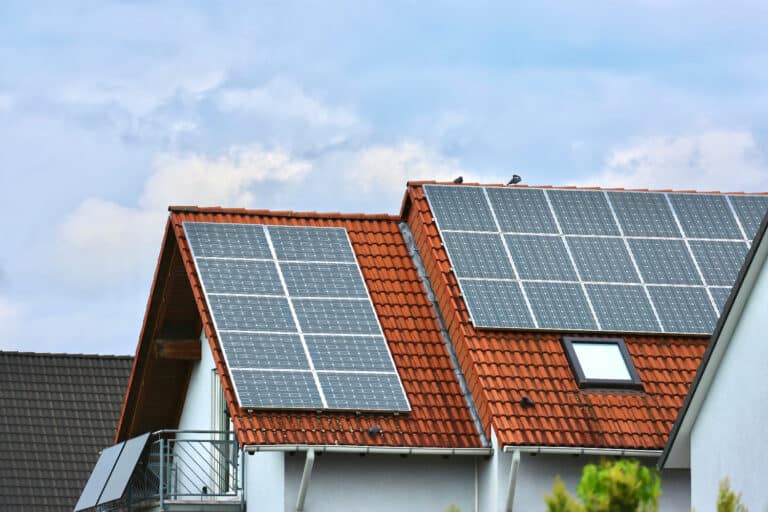It’s time to put on your inspector hat and dive into the world of commercial roof inspections. Maintaining your commercial roof is crucial for protecting your investment and ensuring the safety of your property. But where do you start? Fear not – we’ve got you covered with this handy six-step inspection checklist. From checking for leaks to inspecting the flashing, we’ll walk you through the process like a seasoned pro.
Inside this blog:
- 6 steps to inspecting your commercial roof safely
- Details under each step to ensure a successful inspection
Keep reading to learn how you can protect your investment with a commercial roof inspection.
Step 1: Check Your Safety
Before you climb up that ladder, let’s talk safety. Here’s what you need to do to ensure a safe and successful roof inspection:
- Gear Up: Put on appropriate safety gear, including a hard hat, non-slip shoes, and safety harness.
- Buddy System: It’s always a good idea to have a buddy with you when inspecting a roof. They can help spot potential hazards and lend a hand if needed.
- Check the Weather: Make sure to schedule your inspection on a clear, dry day. Wet or icy conditions can make the roof slippery and dangerous.
Step 2: Exterior Inspection

Now it’s time to take a close look at the exterior of your commercial roof. Here’s what to keep an eye out for:
Check for Debris
Before diving into your commercial roof inspection, it’s crucial to start with a clean slate. Here’s why removing debris is essential:
- Sweep Away Trouble: Take a moment to clear off any debris or vegetation from the roof surface. Leaves, branches, and other clutter can trap moisture, leading to rot and damage over time.
- Preventive Measure: By removing debris, you’re not only tidying up the appearance of your roof but also preventing potential water buildup and structural issues down the line.
Inspect the Drainage System
Now that your roof is debris-free, it’s time to ensure that water has a clear path off the roof. Here’s why checking your drainage system is crucial:
- Gutter Clean-Up: Take a close look at your gutters and downspouts to ensure they’re free of debris and blockages. Clogged gutters can lead to water backing up onto the roof, causing damage to the structure and interior of your building.
- Downspout Duty: Check that your downspouts are securely attached and directing water away from the building’s foundation. Proper drainage is essential for preventing water infiltration and potential water damage.
Look for Signs of Damage
With a clear roof surface and functioning drainage system, it’s time to inspect for any signs of damage. Here’s why it’s essential to catch issues early:
- Identify Trouble Spots: Take a thorough look at the roof surface for any signs of damage, such as cracks, tears, or blistering. These could indicate underlying issues that need to be addressed promptly.
- Addressing Weaknesses: Identifying and addressing damage early can prevent it from worsening over time. Prompt repairs can help extend the lifespan of your roof and prevent costly repairs down the line.
Step 3: Interior Inspection
Next, it’s time to head indoors and inspect the interior of your commercial property for signs of roof damage. Here’s what to look for:
- Check for Leaks: Look for water stains or discoloration on ceilings, walls, or floors, as these could indicate a roof leak.
- Inspect Insulation: Check the insulation in the attic or ceiling space for signs of moisture or mold growth, which could signal a roof leak.
- Look for Sagging: Check for any areas of the ceiling that appear to be sagging, as this could indicate structural damage caused by roof leaks or water infiltration.
Step 4: Flashing Inspection

Flashing plays a critical role in preventing water infiltration around roof penetrations and edges. Here’s how to inspect it:
- Check Seals: Inspect the flashing around chimneys, vents, skylights, and other penetrations for signs of damage or deterioration.
- Look for Rust: Check for rust or corrosion on metal flashing, as this could compromise its effectiveness and lead to leaks.
- Ensure Proper Installation: Make sure that flashing is properly installed and sealed to prevent water from entering the building.
Step 5: Roofing Material Inspection
Now it’s time to take a closer look at the roofing material itself. Here’s what to check for:
- Inspect for Wear and Tear: Examine the surface of the roof for signs of wear and tear, such as missing or damaged shingles, cracks, or punctures.
- Check Seams: Inspect seams and joints in the roofing material for signs of separation or lifting, as these could allow water to penetrate the roof.
- Look for Ponding Water: Check for areas of standing water on the roof surface, as prolonged ponding can lead to roof deterioration and leaks.
Step 6: Professional Inspection
While DIY inspections are essential for routine maintenance, it’s also essential to have a professional roofing contractor perform a thorough inspection periodically. Here’s why:
- Expertise: Roofing professionals have the knowledge and experience to identify potential issues that may not be apparent to the untrained eye.
- Preventive Maintenance: Regular inspections by a professional can help catch small problems before they escalate into major issues, saving you time and money in the long run.
- Peace of Mind: Knowing that your roof has been inspected by a qualified professional can provide peace of mind and confidence in the safety and integrity of your commercial property.
🏢 Protect Your Investment With a Commercial Roof Investment
With this six-step commercial roof inspection checklist in hand, you’re well-equipped to keep your commercial property in tip-top shape. By conducting regular inspections and addressing any issues promptly, you can extend the life of your roof and protect your investment for years to come. So, grab your clipboard and get ready to tackle those inspections like a pro!
Contact our team of roofers for top quality workmanship and transparent communication and pricing. At Clean Cut Roofing, we strive to bring excellent craftsmanship to every home improvement project we take on. Let’s kick off your next project today!




